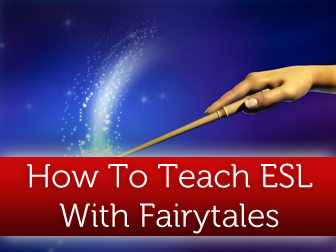♕ Once Upon a Time: Teaching ESL with Fairytales

![O: Once Upon a Time: Fun with Fairy Tales [Teacher Tips from A to Z]](https://m.busyteacher.org/uploads/posts/2011-08/1312325744_esl-fairy-fun.png)
One day, she met a great wizard who needed her help. She gave him a peer evaluation and in return, he shared some fun activities with fairytales she could do with her English students. The teacher used these activities, and she and her class lived happily ever after.
Set the Stage
Start your fairytale themed lesson with a few fairytales from around the world. You can use examples from the brothers Grimm (e.g. Cinderella or Hansel and Gretel) or something more contemporary like Misoso: Once Upon a Time Tales from Africa by Verna Aadema. Give your students an idea of the story’s plot and characters, and then read it aloud to your class. See how high their listening comprehension was with a short true/false quiz or group discussion questions. After your students have answered the questions, read the story again and give them a chance to change their answers.
Once they have heard one or two examples of fairytales, discuss what the word fairytale means and the characteristics of a typical fairytale. Most will begin with “Once upon a time” and end with “and they lived happily ever after.” Other qualities you should look for include that they are made up stories and they often teach a lesson to the reader or listener. After your students understand the basics of a fairytale, take the discussion to a deeper level. Help your students understand that fairytales often portray a conflict between opposite types of people: good and evil, rich and poor, clever and mean. Other characteristics often found in fairytales are help in a magical way and a happy ending for the main character.
If you have time and your students have the courage to do it, break your class into groups and give each group a well-known fairytale. Allow your students some time to plan a skit, and then have each group act out the fairytale in front of the class. This will give your students practice in their reading comprehension as well as their public speaking not to mention giving the rest of the class some free entertainment.
Make a Plan
Now that your students understand what fairytales are and what elements they usually contain, have them start thinking about their own fairytales. If they were going to write an original fairytale, what would they say? Have each student create a story plan which outlines what his or her tale will be about. Your students should decide on good characters and bad characters that will play a role in the story. They should then determine the problem or conflict and the solution to the problem or the resolution. If your students are not familiar with these vocabulary terms, explain them before the brainstorming session. Once each student has a plan in place, pair them together to review the plans with a classmate. If the other person has any questions or thinks a part of the story is unclear, let your students revise their plans before they sit down to write the whole story out.
Write On
Now is the time for your students to use their plans to write their fairytales. They should follow the plan they have already laid out and make sure that the fairytale has all the elements of this type of story. Have them check for good and bad characters, a beginning, middle and end, magical help and a lesson for the reader. If your students are not at the proficiency that they can write an original tale, have them retell a fairytale that they know, perhaps one from their native language. Either way, your students will get practice writing and communicating their ideas through the written word.
Share the Lesson
Once the fairytales are written, give each student a chance to read his or her fairytale aloud to the class. After each presenter, have groups of students discuss what they liked about the story. Also, challenge them to look for the typical ingredients of a fairytale. Then have the groups compare and contrast the story to well-known fairytales. If you have younger students in your school, you may want to set up a reading date with another class so your students can read their fairytales to the younger students. Finally, bind the stories your class has written into a large volume (you can use a three ring binder) with a fanciful cover. Title it “Once Upon an ESL Class” or another title that you prefer. Give each student the opportunity to illustrate his story and then make the book available to your students so they can read it during free reading time.
Perhaps you will find that your class, too, will find a happily ever after.